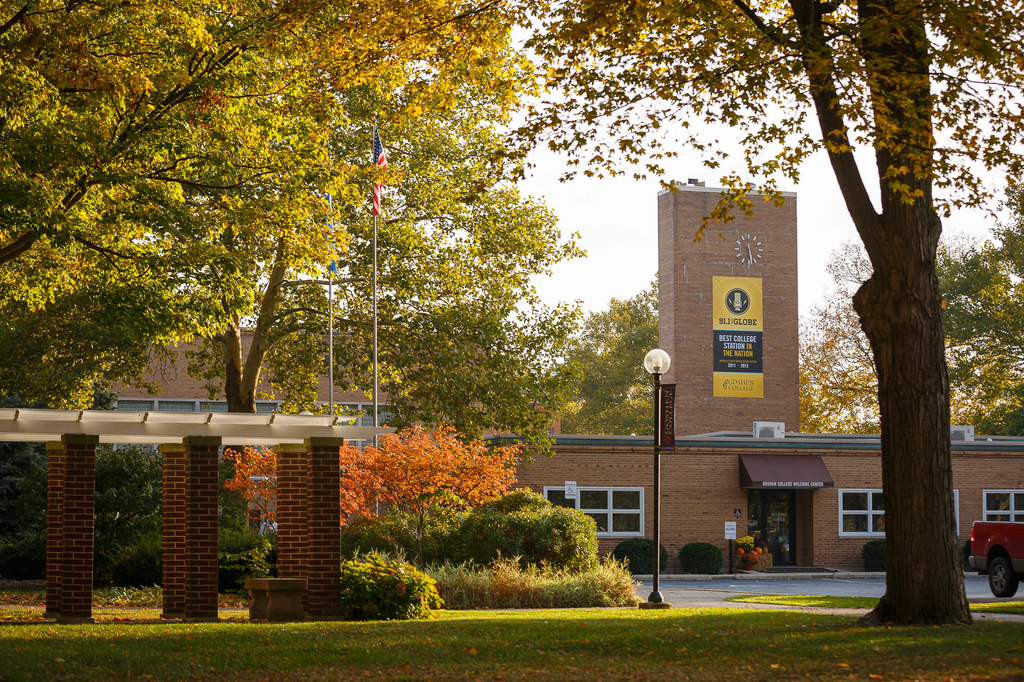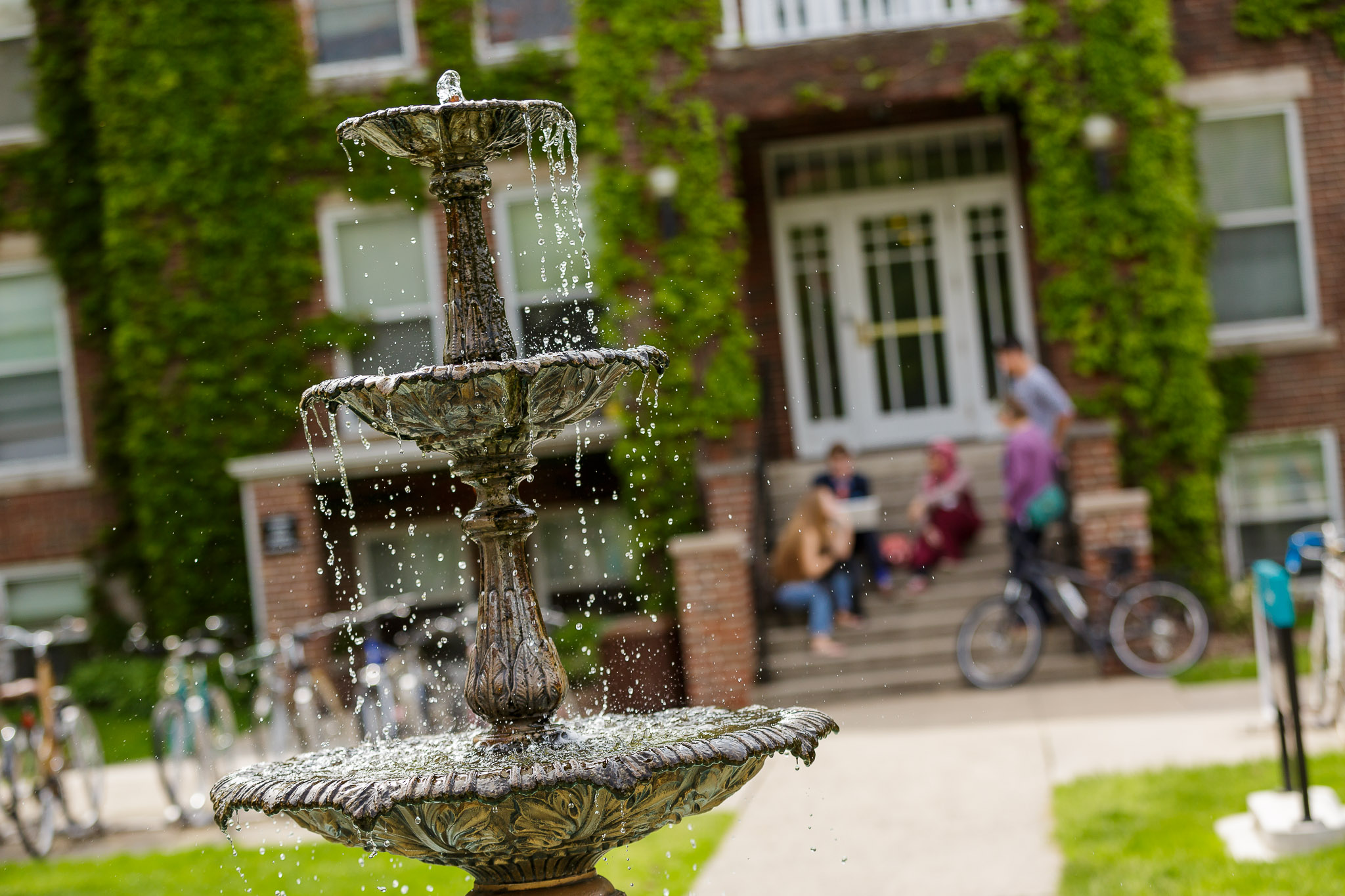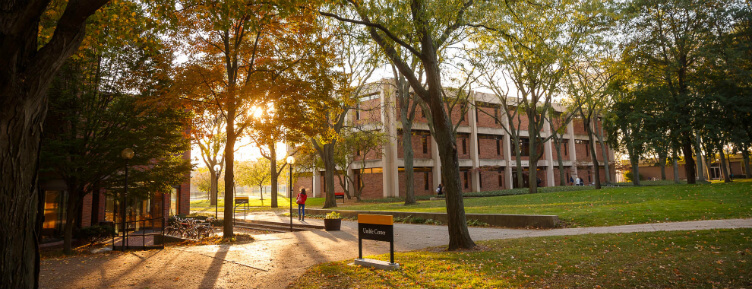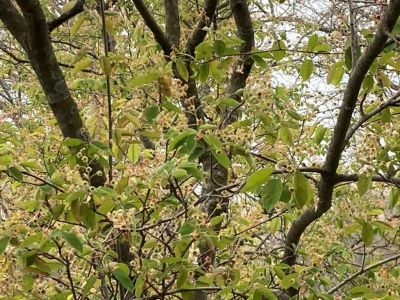
Today’s post is written by Haylee Pennington, a junior nursing major from Wakarusa, Indiana:
Serviceberries, from the local native Amelanchier arborea, have many varieties which are all edible and insanely delicious. We were able to visit the Reith Interpretive Center in Goshen and meet Aaron Sawatsky-Kingsley, Director of Environmental Resilience and Goshen’s first city forester. Sawatsky-Kingsley mentioned that exceptional berries have many names including: Juneberry, Sugarplum, Saskatoon, etc. Serviceberries, depending on the weather conditions, will be fully ripened by the end of May, start of June—this is where the name “Juneberry” comes from. The berries, often compared to blueberries, have a very sweet taste and contain tiny seeds inside, leaving you with an intriguing aftertaste.
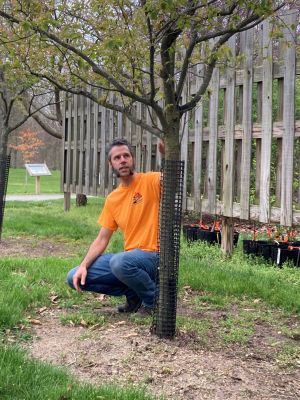
The main job for Sawtsky-Kingley is attending to the pre-existing trees upon the site, as well as planting many trees in potential spaces that they could successfully grow and develop. The trees in which the service berries grow take a few years to fully mature, and end up reaching about fifteen feet in height. In addition, these berries can grow on shrubs as well. Upon arrival, I noticed a few things: one, the trees were beautiful, with an abundance of white flowers filling the branches and two, the trees were surrounded with mulch, which we learned helps with the moisture of the tree.
During our adventure to these remarkable trees, we read several pages from “The Serviceberry: An Economy of Abundance,” by Robin Wall Kimmerer. This article mentions the importance of the service berries as a gift– using gratitude and reciprocity can multiply the exchange, especially for these berries. Through this activity, I learned the importance of the serviceberries, not only to the indigenous people, but to future generations as well. When June arrives, I know there will be some competition for these wonderfully tasting serviceberries with other people and even the birds!
The Serviceberry: An Economy of Abundance by Robin Wall Kimmerer

